We know why you're here.
You want better Facebook ad click-through rates (CTR), and you want them now.
But… what even is a good CTR? And how are you supposed to get a better CTR when you don't even know if the one you have now is technically considered bad?
Oof.
I'll fill you in on a little secret, something the other articles won't tell you…
Facebook CTRs don't matter.
That's right.
No one knows what a good CTR percentage is, so focusing on CTR instead of conversions might just drive you crazy.
BUT, here at KlientBoost, we know the value of continuously improving every aspect of an ad. And this includes ensuring your ads get the most conversions possible.
We know that when your CTR struggles, so will your conversions. So we consistently test and reimagine ads to maintain the long-term health of our conversion goals.
In this guide, we'll walk through how you can improve your campaigns to do just that. Let's review the best methods to improve your Facebook ads CTR.
Get brand new Facebook ad strategies straight to your inbox every week. 23,739 people already are!
What is CTR on Facebook?
Facebook CTR is the number of people who click on your ads relative to the number of folks who saw them.
So, if your Facebook ads are shown to 100 people daily and only five people click, then your click-through rate is 5 clicks ÷ 100 views = .05 (or 5%).
Why does Facebook ads CTR matter?
I know I said Facebook CTR doesn’t matter, buuuut it is pretty helpful in identifying some weak spots and areas for improvement.
For instance, your Facebook CTR can help determine the relevance of your copy and messaging. If a lot of people are viewing your ads and few are clicking on them, then odds are… something’s wrong.
It may indicate issues with
- targeting the wrong audience
- creating the right message at the wrong time (e.g., selling to top-of-the-funnel audiences)
- making a bad offer (e.g., maybe your audience is more interested in bundles than discounts)
- using lackluster ad creatives (e.g., the images are unappealing)
All of these things can ultimately hurt your conversion rates. So in this case, Facebook ads CTR is helpful for that continuous improvement we talked about. If you can identify the issue, you can improve the ads, your CTR, and protect your conversion rates.
How do you calculate it on Facebook?
CTR is the ratio of people who clicked an ad compared to how many saw it (i.e., impressions) as depicted in the formula below:
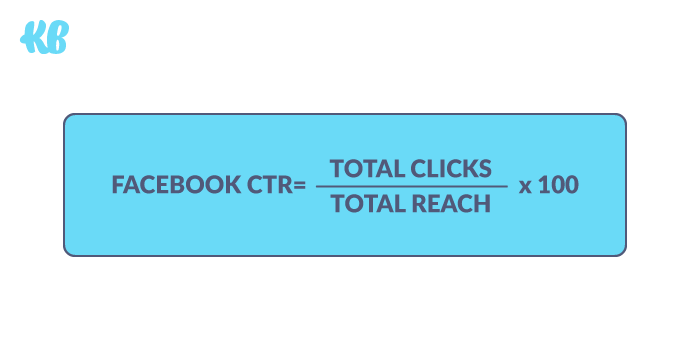
What is the average CTR for Facebook ads?
Instapage tells us that the average Facebook click-through rate across all industries surveyed sits right around 0.90%.
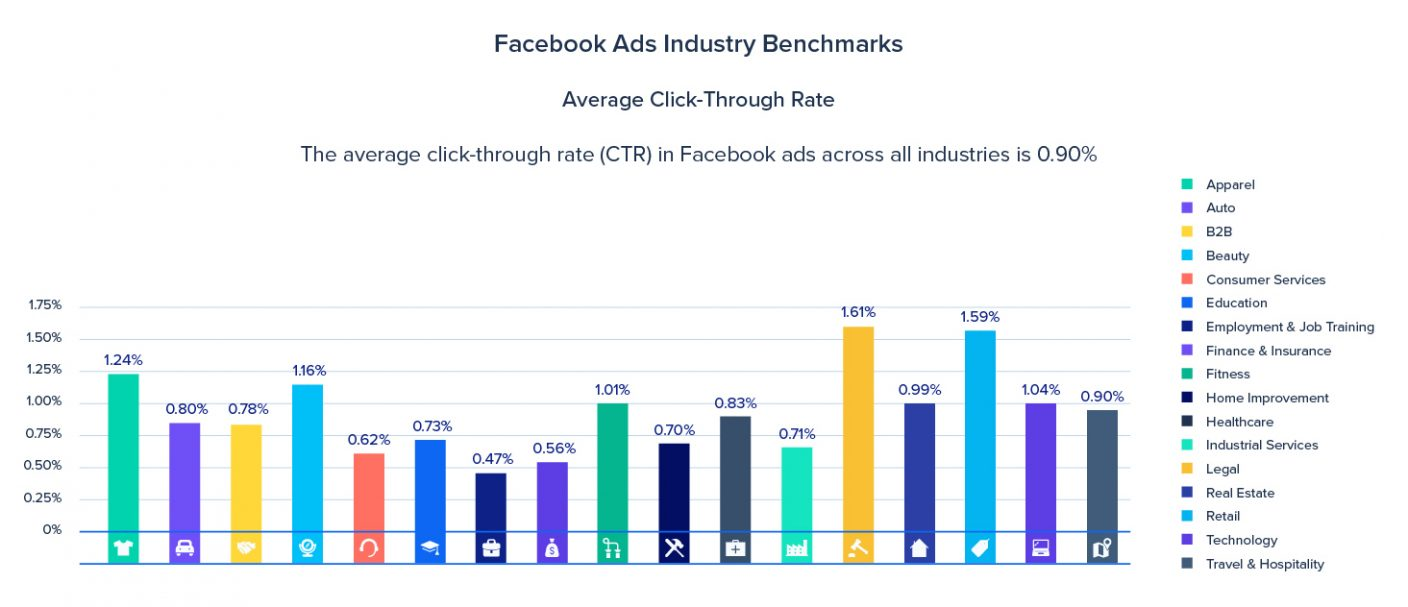
The same article tells us that some of the highest CTR industries are
- retail, with a CTR of 1.59%
- apparel, with a CTR of 1.24%
- beauty, with a CTR of 1.16%
- technology, with a CTR of 1.04%
- and fitness, with a CTR of 1.01%
While the average CTR will vary across industries, it’s safe to say that the more relevant or appealing your content of the offer is to your audience, the better your click-throughs.
Retail products, especially those you can buy online, generally have a much easier time getting people to click and shop using appealing product photos and offers. Free shipping? Click. Buy-one-get-one? Click. This industry also appeals heavily to widely-available retail therapy and impulse-buyer crowds that like to shop idly.
But as for some services shown in the image above (e.g., employment, finance, or insurance services), encouraging clicks can be much more difficult. Fewer people are interested in those services at the moment, and they’re not likely to be fast purchase decisions.
Really, a “good” CTR depends on your industry as well as many other factors, and if you’re sitting around these numbers for your industry, have no fear.
What is a good CTR for Facebook ads?
Well, it depends on who you ask. Some will say as low as 1% and others as high as 25%.
Not very helpful, is it?
No worries, even the greatest marketers get confused about Facebook ads CTRs sometimes.
But you still want to know: what's a good CTR for a Facebook ad campaign?
It simply depends.
Several factors determine your CTR, such as your industry, campaign optimization, targeting options, messaging, and so many other elements that make an ad convert. Your ads need to appear for a highly-targeted audience with appealing visuals, messaging, and offers.
This requires consistent Facebook ad testing to pull off. Also, keep in mind that Facebook is a lower-intent platform, so expect CTRs to be lower than search ads in general.
But based on the averages above for Facebook Ads, you should at least aim for 1% or higher.
Evaluating your Facebook ads CTR
When evaluating your Facebook ads CTR, keep in mind true CTR attribution and if CTR is the only metric you should consider to meet your goals and benchmarks.
CTR attribution
Your CTR may be an inflated metric that doesn't reflect true ad performance.
Initially, it wasn't just link clicks to your destination page that were counted in the calculation. It also included
- event responses
- likes
- clicks to enlarge images
- comment clicks
- clicks on "View More" text
However, this is no longer the case. Now, Facebook has six different CTR metrics in your ads manager:
- CTR (all): total number of all clicks divided by the number of impressions
- CTR (link click-through rate): amount of clicks your ad receives divided by total impressions
- Unique CTR (link click-through rate): amount of unique clicks your ad gets divided by total reach (counts people, not clicks)
- Outbound CTR (link click-through rate): total number of ad clicks (that take visitors to your landing page) divided by impressions
- Unique outbound CTR (click-through rate): number of unique ad clicks (to your landing page) divided by impressions
- Unique CTR (all): number of all unique clicks divided by impressions
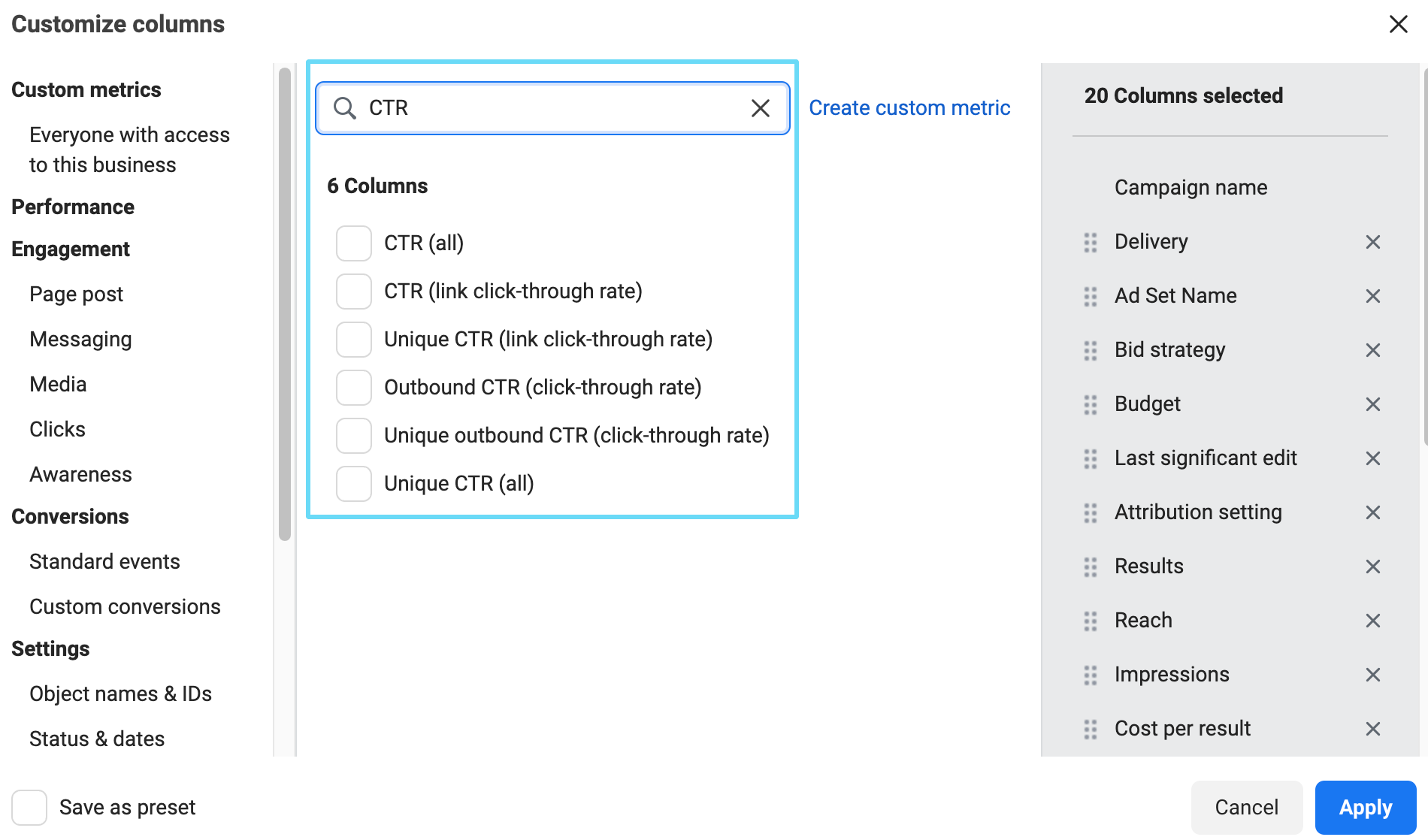
But if you're comparing the current link click-through rate with historical click-through rates that bundled all the previous engagements along with those link clicks, your comparison over time may not be accurate.
Also, if you're sharing a post that links to another, ensure link clicks are from the post you're sharing and not another mentioned within.
Finally, keep your goal in mind.
Are you trying to compare performance between different ad types or compare performance within each type?
Video, carousel, and image ads all work well, but can sometimes outperform one another in certain campaigns. When deciding on the ad format, pay attention to conversions alongside CTR.
For instance, a video ad with a higher CTR may have a higher number of clicks, but the carousel version drives more conversions with fewer clicks. The carousel ad might, after all, not be a worse performer in this case because, in the end, conversions trump CTR.
CTR vs. conversions
Let's make one thing clear: a high CTR means nothing if it doesn't convert. (This is different than Google Ads, where expected CTR is an important part of your Quality Score and ranking.)
Even if your Facebook marketing campaign had a 50% click-through rate, you're in trouble if none of these clicks convert into sales.
If your competitor's ads deliver a CTR of 3% but 50% of those people convert on the landing page, they'll get 15 new customers per 1,000 ad impressions.
They'll do pretty well, even with a low CTR.
Case in point?
The ads with the highest CTR aren't necessarily your best-performing ads.
Always evaluate your ads' CTR together with the conversion rate and cost-per-click. Ask yourself, “What's the optimal click-through rate for your Facebook campaign to have a positive ROI?”
A case study by AdEspresso correlated higher CTR with a lower cost-per-click. So, there's one reason for working on increasing your ads' click rates.
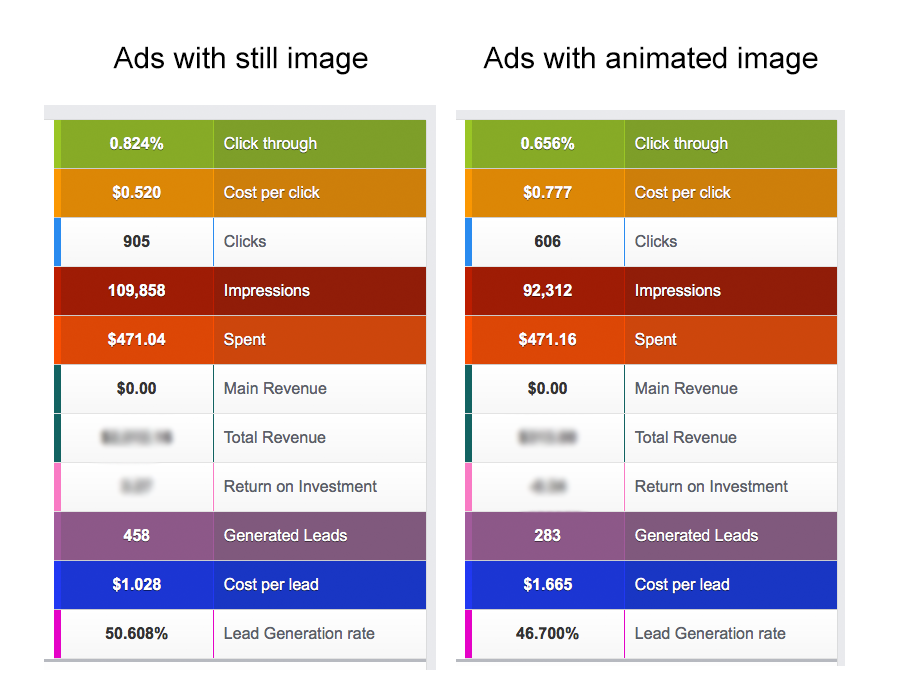
24 ways to increase your Facebook ads CTR
Your Facebook ad campaigns are up and running. Many are getting thousands of views, but the clicks aren't coming through.
What gives?
Figuring this out requires consistent monitoring and experimentation. So we put together a list of techniques that can improve your click-throughs (based on what you find).
Take a look.
1. Ensure your copy and CTA match your audience temperature
An ad is only as good as the offer. And the offer is only as good as its alignment with the intended audience. If your offer is "Buy now" for an audience in the awareness stage, then expect fewer clicks.
It's critical to align all of your messages and CTAs with the temperature of the audience.
For "cooler" audiences, make a free and low-effort offer. For instance, "Try this lip color using our tool," if you're selling makeup. Or "Download our free guide," for those looking up how to achieve a specific goal.
This doesn't mean you can't use audience targeting for people who are ready to buy (or almost ready). Middle- and bottom-of-the-funnel buyers should also be on your campaign's radar.
Setting up Facebook campaigns for multiple audiences and crafting your offers around those audiences’ interests should definitely be a focus of yours as you aim for increased CTRs.
For example, you can create Facebook Custom Audiences to set up retargeting campaigns with landing page-specific ads.
Lastly, keep your Facebook ad offers diversified by the temperature of the audience, so you're delivering the right ads to the right people.
2. Narrow down your audience
Wondering how to ensure your offer is relevant to the audience? There's only one way to find out—it's running your ads for a while and measuring their click-through rate.
Still, there's a lot you can do prior to the campaign activation to guarantee higher success rates.
We've seen many Facebook ad campaigns targeting tens of millions of people with a single offer. In most cases, it results in low ad relevance and poor CTRs.
One of the worst damages of targeting too broad an audience is that you may not reach the people with the highest purchasing potential due to a limited ad budget.
Now, if you're launching a prospecting campaign, then targeting larger audiences (between one and three million) makes sense.
Why? Because it helps lower CPMs and generates potential conversions for less.
But this doesn't mean you should create campaigns targeting everyone. It still needs to target the most relevant interest groups that may want to purchase your product.
So avoid targeting audience sizes in the 10 million to billions—that's way too broad.
Take steps to narrow down the large audiences by excluding people by interests, behaviors, age range, and demographics—or exclude custom audiences.
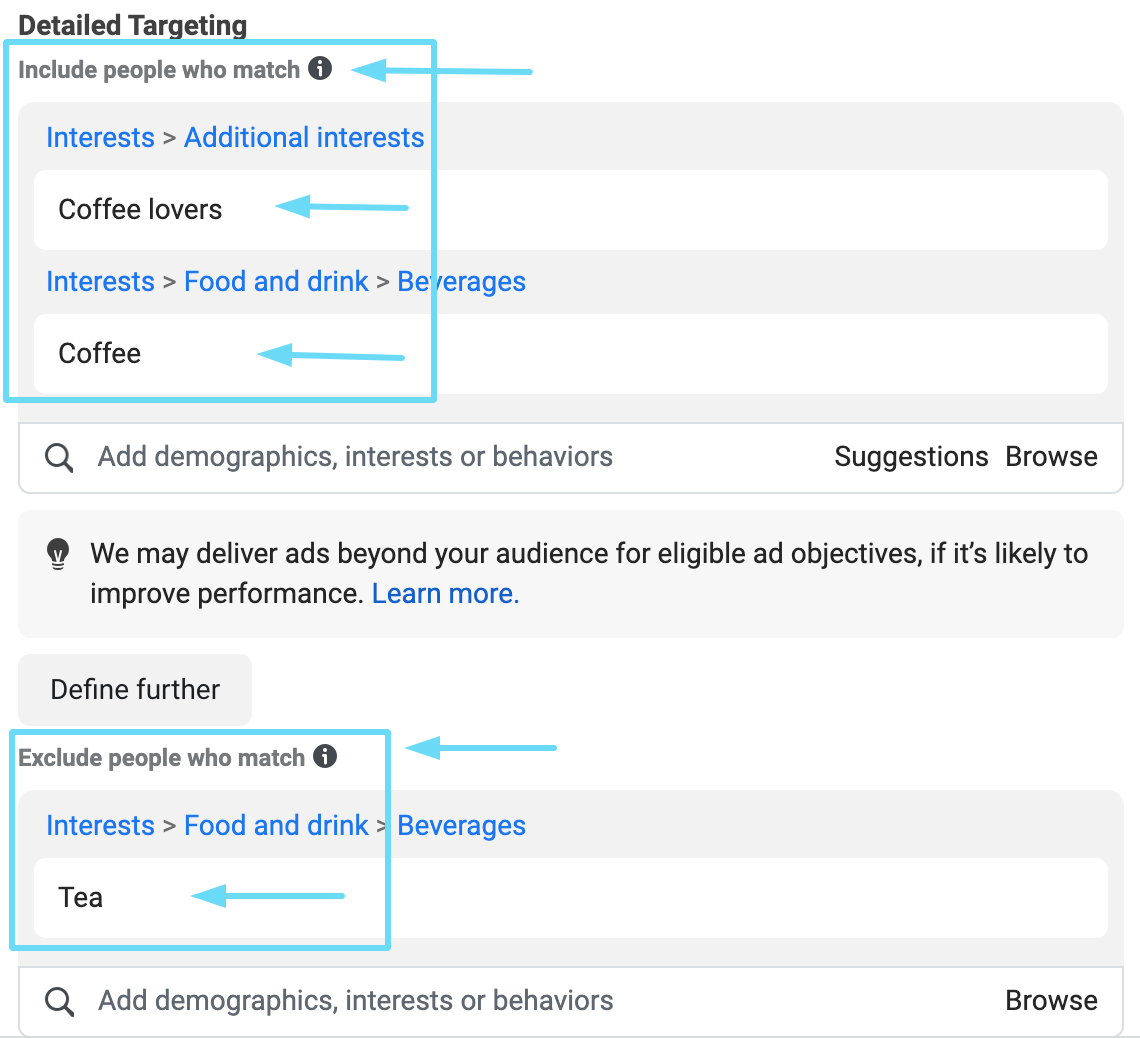
3. Make the most out of your ad copy
The goal of an ad is to attract a specific group of people and get them to click it. The visuals make the ad appealing, and the copy convinces them this is the product or solution they need right now.
So use power words, create urgency, be personable, and do everything you can to nail your ad copy.
Getting your ad copy right requires two things:
- You need to know your target customer.
- You also need to know what triggers them at each stage of their journey.
You can gather this knowledge using customer surveys and interviews. Speaking to your customers gives you insights into how they word and describe their issues. Then, you can use this in your copy to make it more relatable and convincing.
For example, if you're selling diaper bags to moms, and they complain about current bags not having enough external pockets, then this is something to promote in your ad copy.
Only one person needs to be pleased with your Facebook ad copy—the prospective customer.
As startup advisor Julie Supan explains in her interview on First Round Review:
“The high-expectation customer, or HXC, is the most discerning person within your target demographic. It’s someone who will acknowledge—and enjoy—your product or service for its greatest benefit.”
If your Facebook ad copy can attract the high-expectation customer, everybody else will follow.
Start by defining who your target audience really is, and why they should want to buy your product. Then, talk to them. Talk like them.
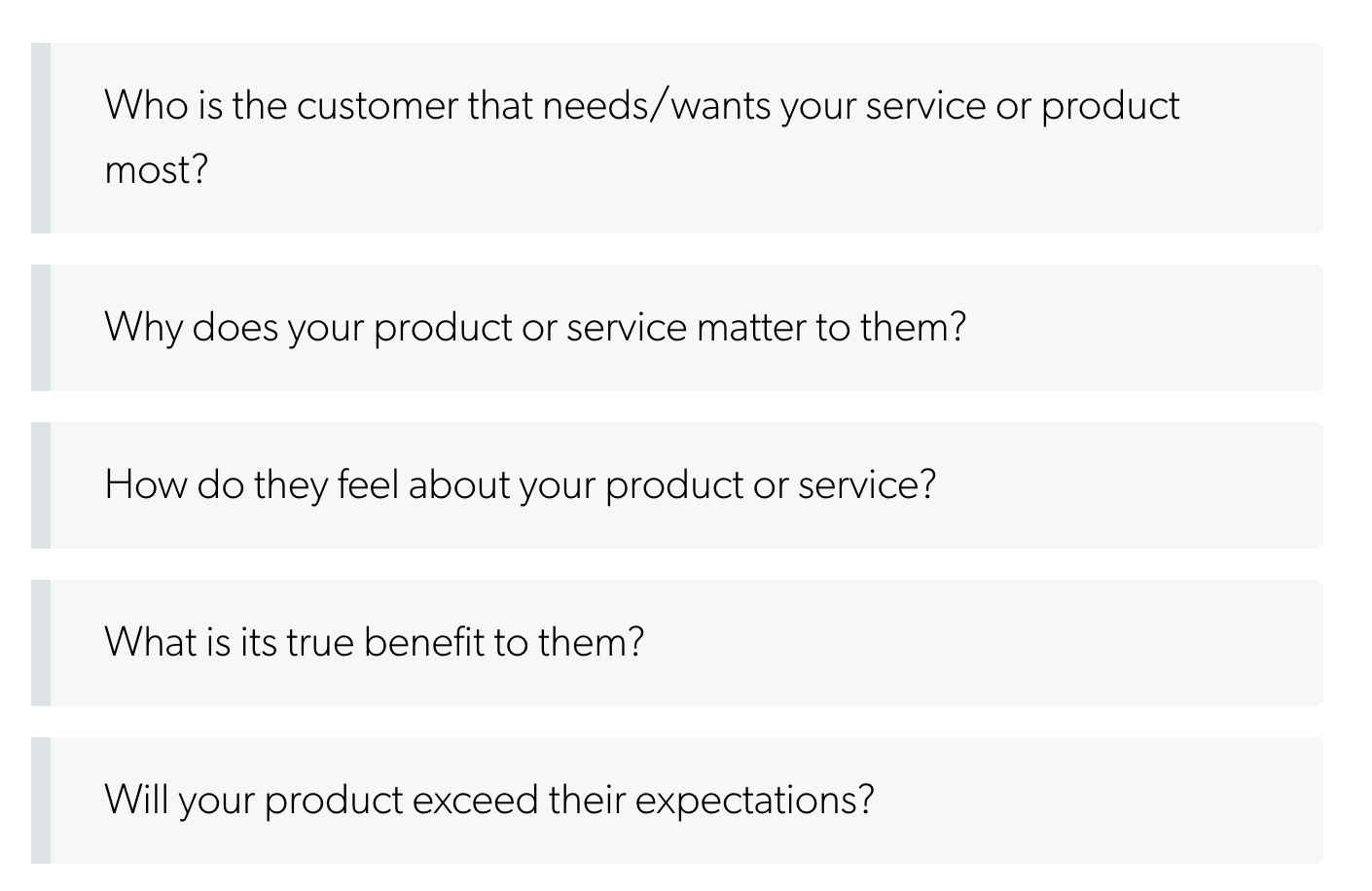
For example, Google addresses the reader multiple times across their Facebook ad. Hopefully, the reader will feel like the ad is talking directly to them, making the offer more relevant and personal.
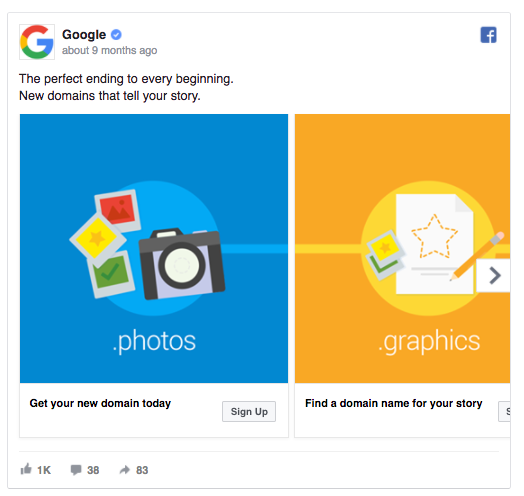
Another example from Hired specifically targets software engineers in L.A. If the right audience segment sees the ad, they're highly likely to click.
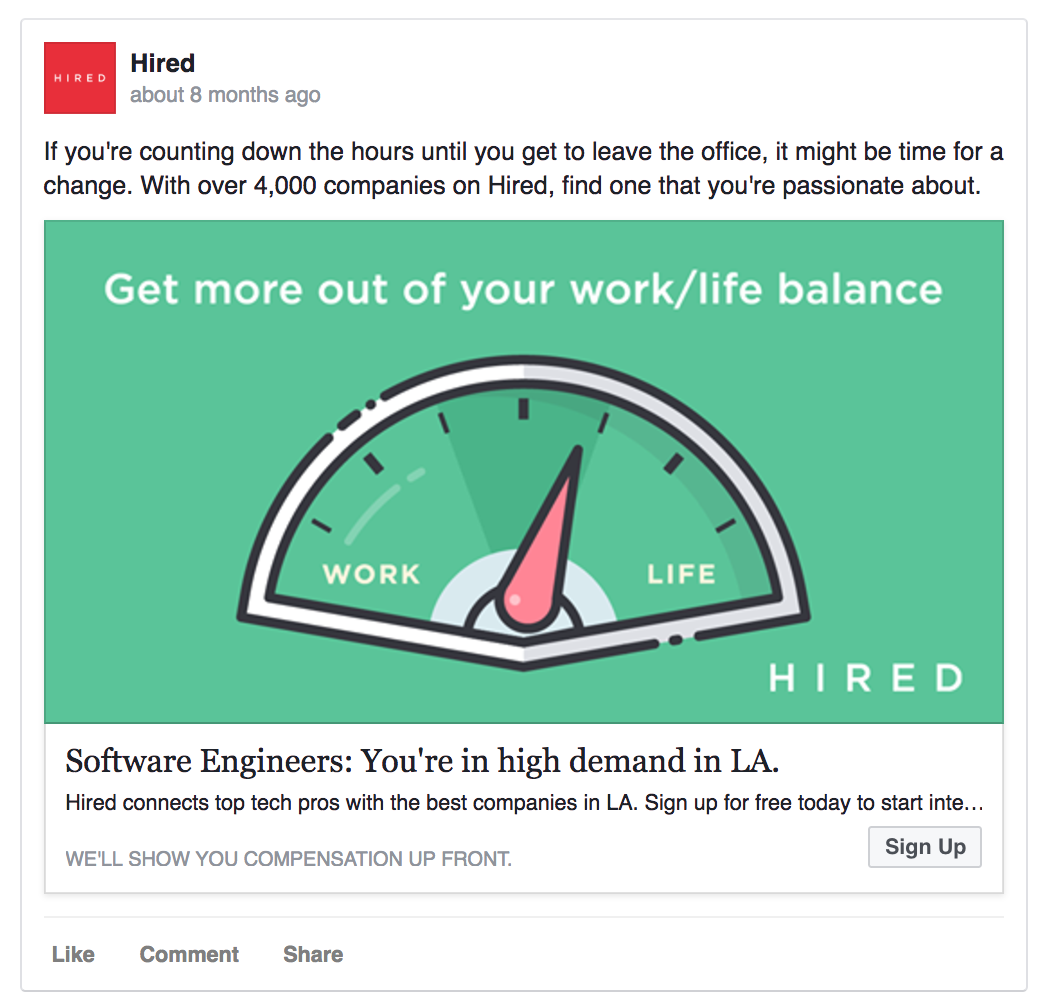
One key to high Facebook CTR is to write for your customer and no one else.
Successful Facebook ad copywriting starts by defining your goal.
Hearing this for the first time? That's because this rule often goes overlooked. But once you think about it, it makes sense.
Assuming your Facebook advertising goal is to get a person to click on your ad and convert, every sentence in your ad copy should contribute to that action by nudging the reader towards conversion.
BarkBox, for instance, has a Facebook ad with a clear goal—getting people to sign up for a monthly subscription. No, wait…excuse us, PUPscription.
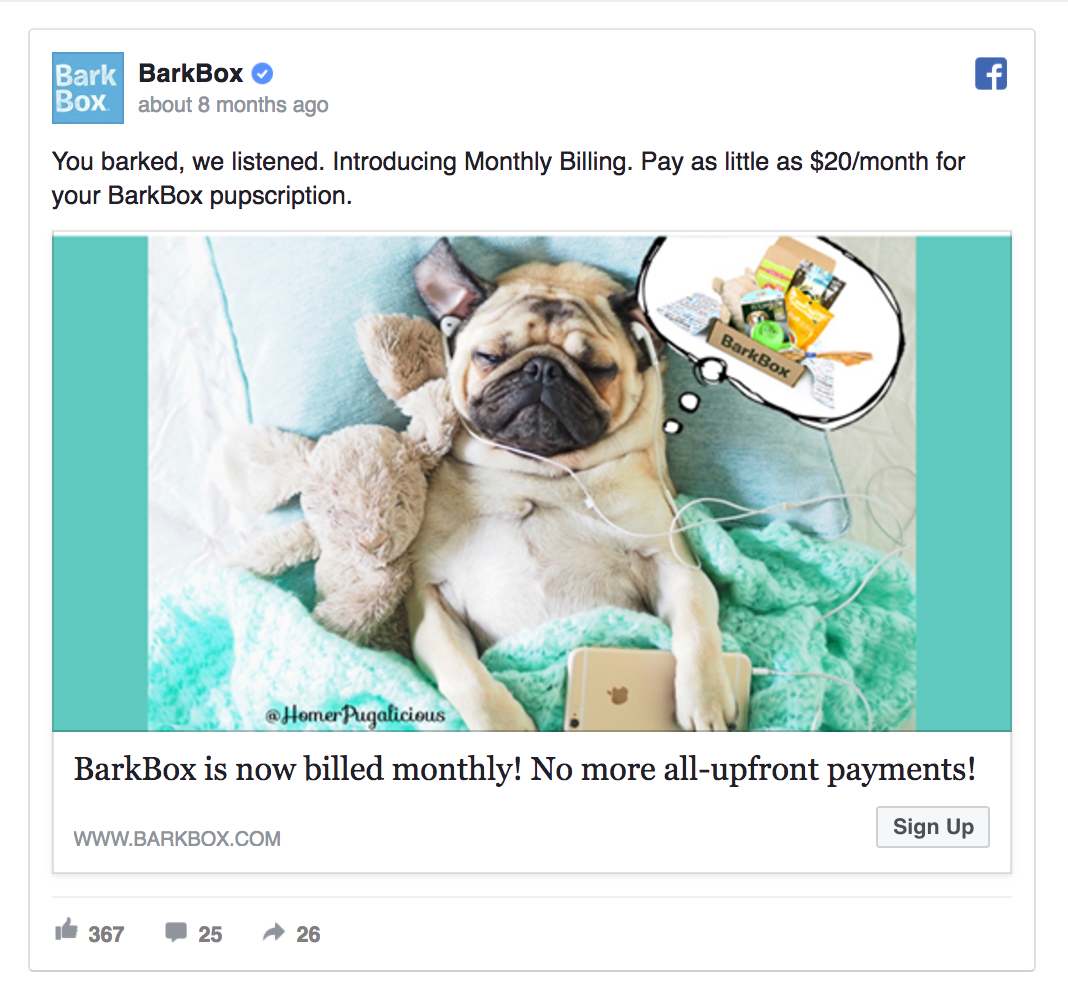
As Joanna Wiebe from Copyhackers explained:
"One of the most important principles to keep in mind when writing your Facebook ad body copy is this: give your body copy a single goal, and stick to it."
You should also use power words to incite action.
Wondering what a power word is? It's a word with the ability to draw people's attention and have a stronger effect on them.
At KlientBoost, we like to use power words in our article headlines to keep CTRs well above the average.
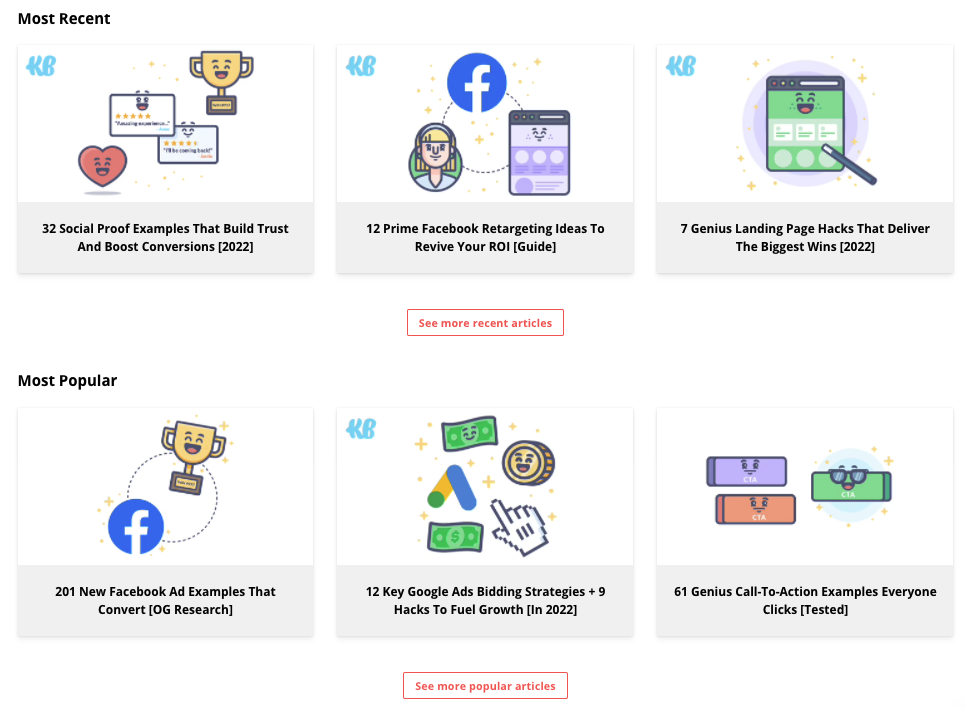
Buffer also put together a list of 189 influential words you can use in your ad copy. Here are just a few of them:
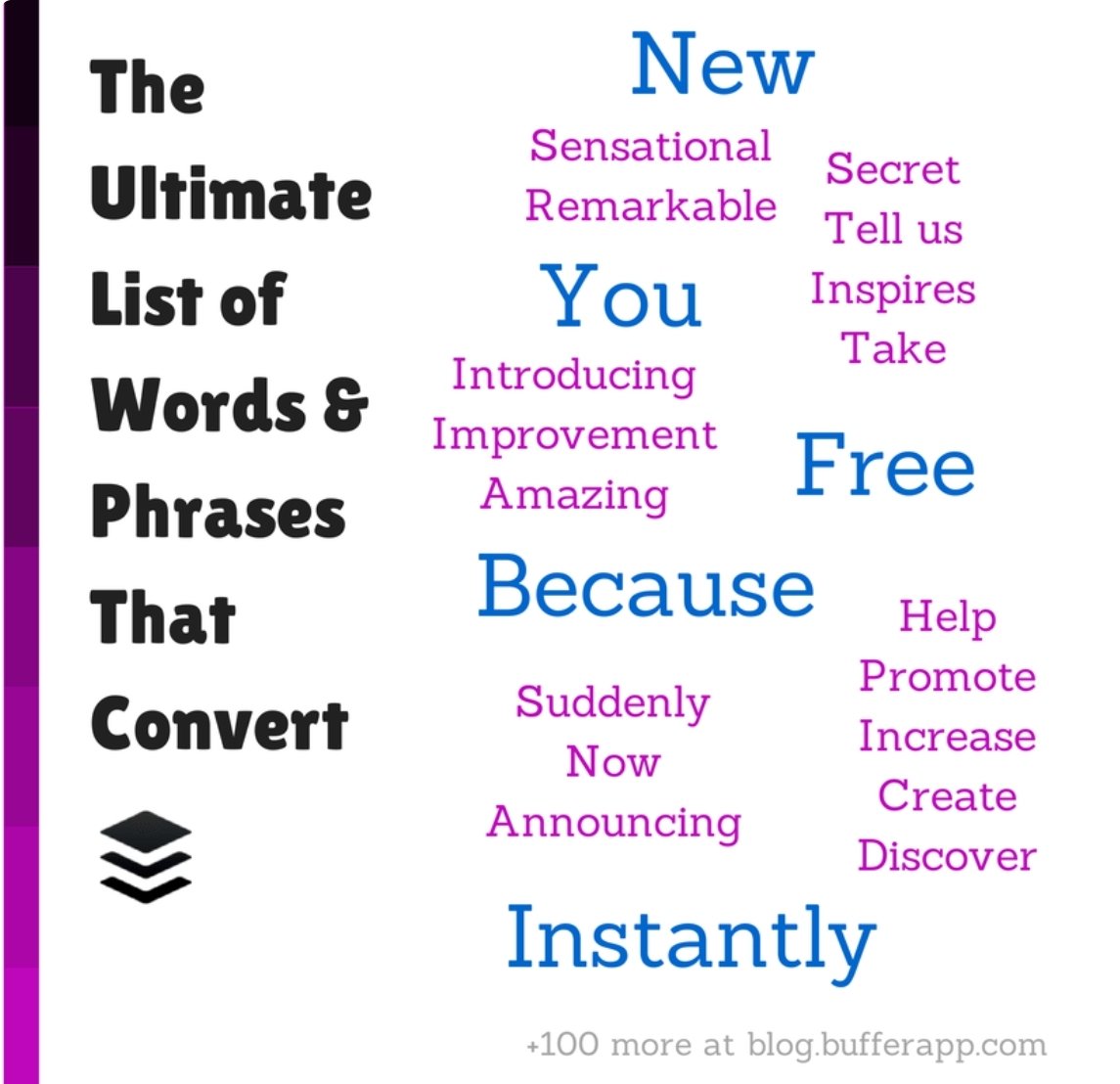
4. Keep your ad copy short & sweet
When trying to find the perfect length for Facebook posts, it’s believed that brief Facebook posts see higher engagement and CTRs.
BlitzMetrics analyzed thousands of Facebook pages and found that engagement increased as posts got shorter.
An average Facebook post is 157.7 characters long, while user posts include 121.5 characters and mobile posts are 104.9 characters.
Further, posts between 120 and 139 characters were 13.3% more engaging than posts with 140-159 characters.
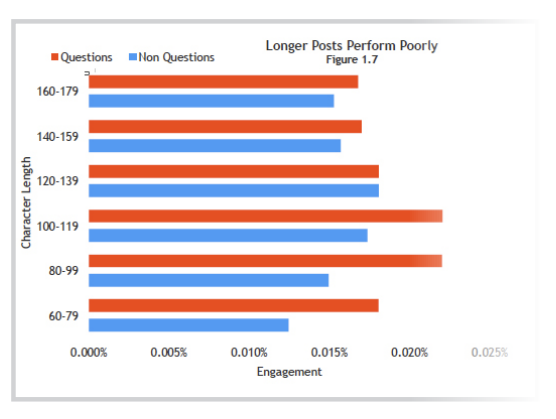
Why do shorter Facebook posts have a higher engagement rate?
The answer lies in the assertion that the more choices a person has, the more time it takes for them to make a decision.
Shorter ad copy means there's less information for a reader to process, making it easier to reach a decision—like clicking on your ad—faster.
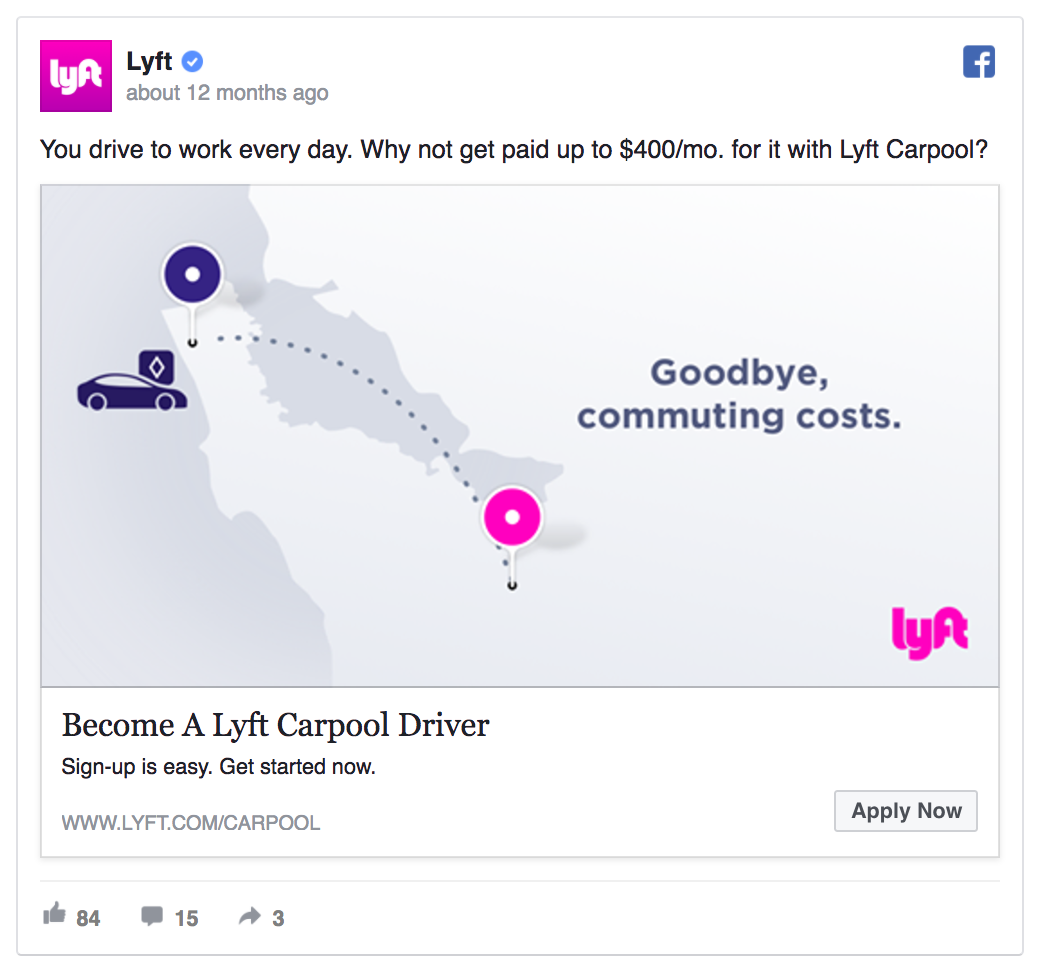
The rule of thumb here is to avoid ad copy with heavy text that's hard to read. Deliver only the most important information and leave the rest of the story to be told on your landing pages.
5. Ask fascinating questions
Headlines capture attention—or at least, they're supposed to.
This is why asking intriguing questions is show-stopping. The idea is to ask something relevant to your audience—something they may even ask themselves.
Or, you can come up with a thought-provoking concept they might've overlooked.
You can phrase the question as a cliff-hanger since people's curiosity increases as knowledge increases (and then suddenly drops off).
All in all, you need to write a Facebook headline that's mysterious enough to make people crave more.
Ahrefs' Facebook ad gambles with the readers' curiosity. No serious marketer can resist clicking on the ad to find the answer.
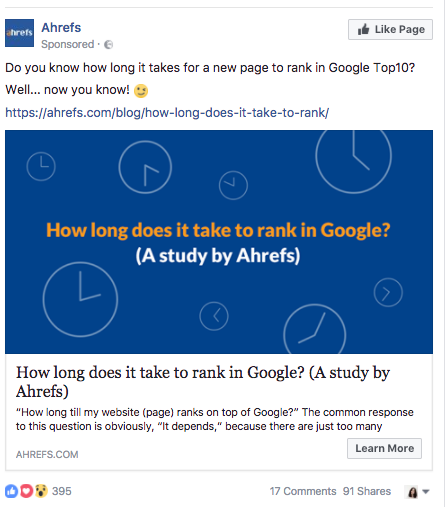
Here's one more example from Asana that we really liked of using questions to increase your Facebook ad CTR:
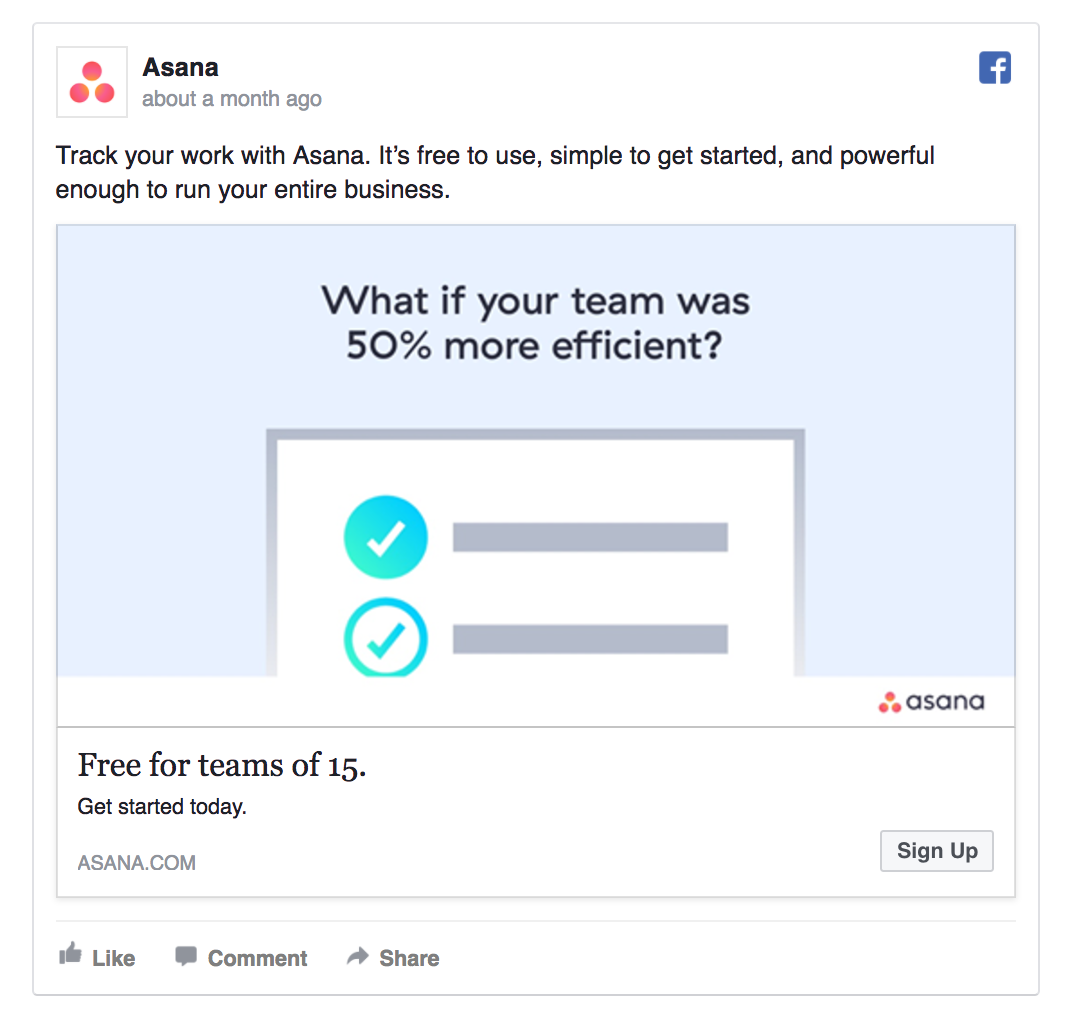
Creating an effective curiosity gap in your ad headline can do two things:
- It makes people immediately click on your ad, resulting in skyrocketing CTRs.
- It drives people to read the rest of your ad copy, making them eventually click on the ad.
6. Keep your headlines at the right length
As weird as it might sound, your Facebook ad headline length matters. A lot.
As one of the Facebook ad tips, Facebook recommends that advertisers keep their ad headlines as short as 25-40 characters in length.
Writing shorter headlines puts you in a challenging position where you need to compress your message to only include the most impressive information.
This means you'll put more effort into finding THE headline message that makes people click.
7. Use action verbs
The best place to put your call-to-action is in the ad's headline.
People are most likely to act on your ad's headline even before they read the rest of the ad copy.
Test several headline CTAs to see which one delivers the highest Facebook ad CTR.
Here's an awesome example by Unbounce. The reason I say it's awesome is because the ad headline is actionable and addresses the reader in just four words.
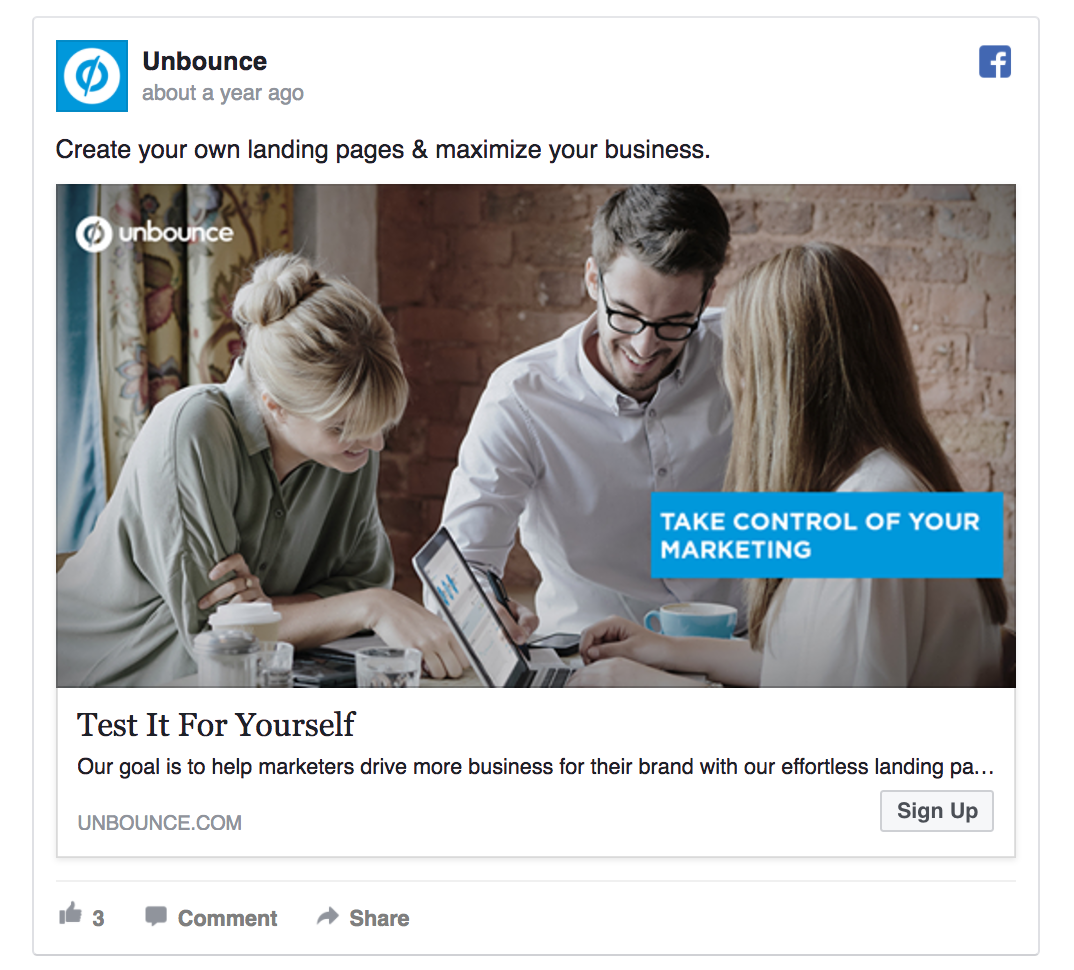
When looking to increase your Facebook ad CTR, follow these headline best practices:
- Use action verbs like “get,” “do,” “try,” “start,” “find,” etc.
- Keep your headline CTA relevant (if you promote a writing tool, test a CTA like “Start writing today”).
- Be specific about what the user will get (“Get your 14-day free trial,” “Test free for 30 days,” etc.).
Need more inspiration? Check out our blog on call-to-action examples and get those creative juices flowing.
8. Include numbers in headlines
Several studies show numbers in headlines help to increase the CTR.
Moz tells us that up to 36% of people surveyed preferred numbers in headlines, making them more likely to click on your ads.
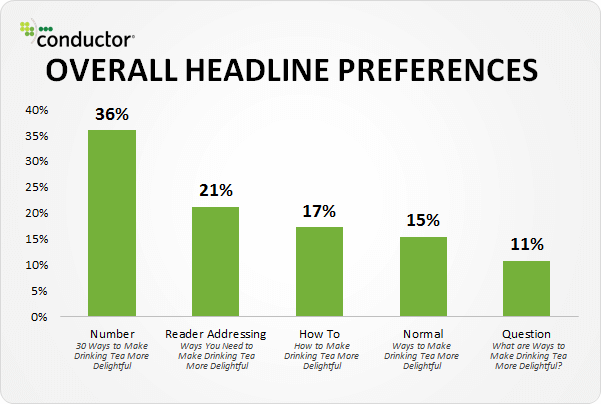
For example, try offering a discount and including the number like Blue Apron does:
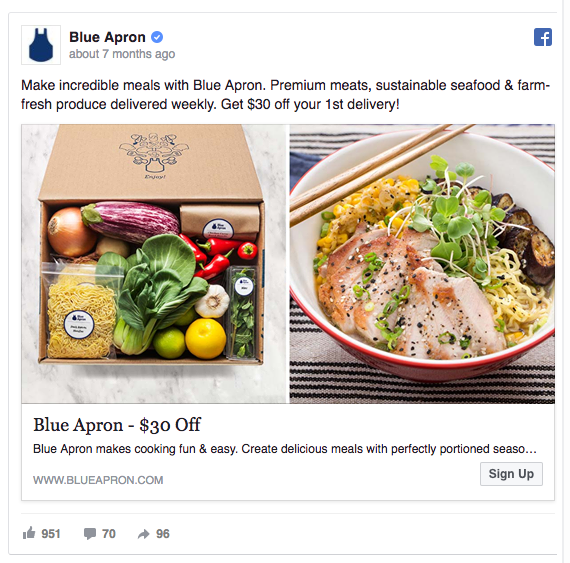
Other numbers you can include in your headlines to make them extra captivating include
- number of days left in a sale
- how many units sold or are remaining
- number of people helped
- percentage discounts
9. Use emojis to catch attention
Before we talk about emojis as one of the recent key marketing trends, I'd like to make one thing clear.
At KlientBoost, we were using emojis even before they were mainstream. 😉
Now, getting back to the emoji discussion, here’s a really good example of emojis used effectively in an ad:

This emoji strategy works because it attracts attention. In the above example, we direct the eyes to each item on the list. Plus, the emojis symbolize each benefit, adding visual emphasis and working past any language barriers.
Start by finding the right emojis in Emojipedia, and copy-paste them to your Facebook ad when inserting ad copy.
However, use emojis with caution. Don't insert them unless they make sense with the messaging and audience.
10. Play on people's emotions
When was the last time you clicked on a Facebook ad?
Was it because of curiosity? Anger? Hope?
Whatever emotions a Facebook ad makes a person feel, what really matters is the fact that it evokes some kind of emotion.
The tactic also seems to work in practice.
The following Facebook ad works because it speaks about the different moods of their target audience. It also works because the app is ideal for each one they might be feeling. The visual then demonstrates what the user can get if they click the ad: meditation.
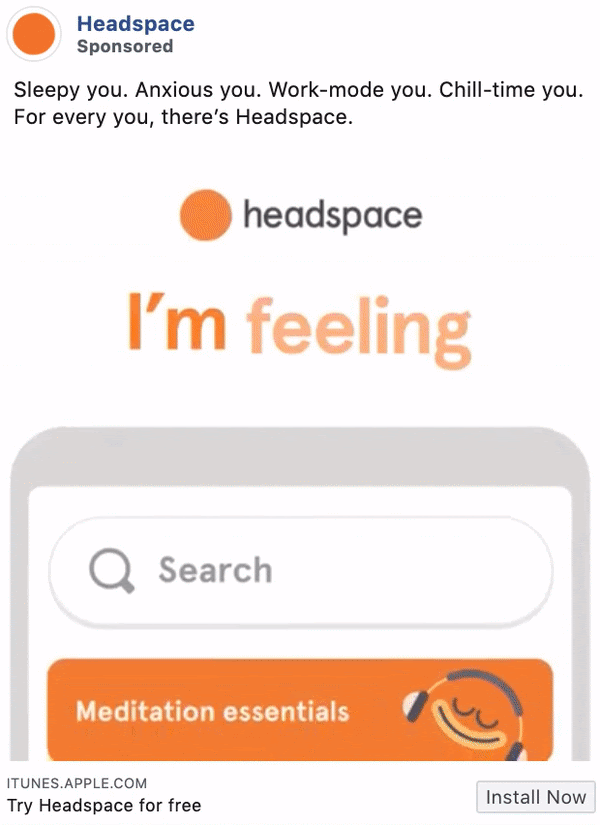
And here's another from The Sill that connects with the audience about health (something many are sensitive about today). This ad shows how they can achieve better health with their product and evokes a calming emotion.
The image also effectively demonstrates the well-being actually being promoted.

If you want to create emotion and increase your Facebook ads' click-through rate, use these four tips:
- Use the appropriate colors to evoke mood in your ad design.
- Keep your tone of voice energetic.
- Show the emotion in the ad image.
- Use exclamation marks or emojis that match the message.
11. Increase your ads' CTR with FOMO
Here's one of the most impactful A/B tests of all time. By using FOMO and urgency, a marketer increased their company's sales by 332%.
Variation A included a discount offer and plain text, while variation B showed a timer counting down to the end of the deal.
This was Variation A:

This was Variation B:

Again, after running the A/B split test, the site's conversion rate saw a 332% increase.
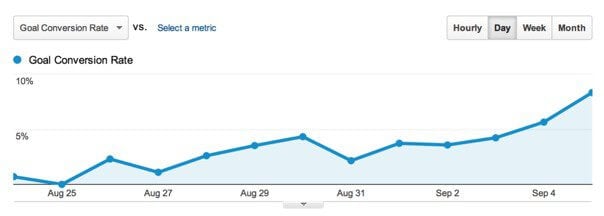
Eventbrite studied millennials and found that 69% experience FOMO when they can't attend an event their friends are going to.
People are afraid of being left out, and both B2C and B2B marketers can use this cognitive bias.
Teabox's Facebook ad, for example, offers a 72-hours-only free shipping period with no minimum order value. If someone hasn't yet ordered a pack of tea because of a high shipping fee, they may be more likely to do it after seeing this ad.
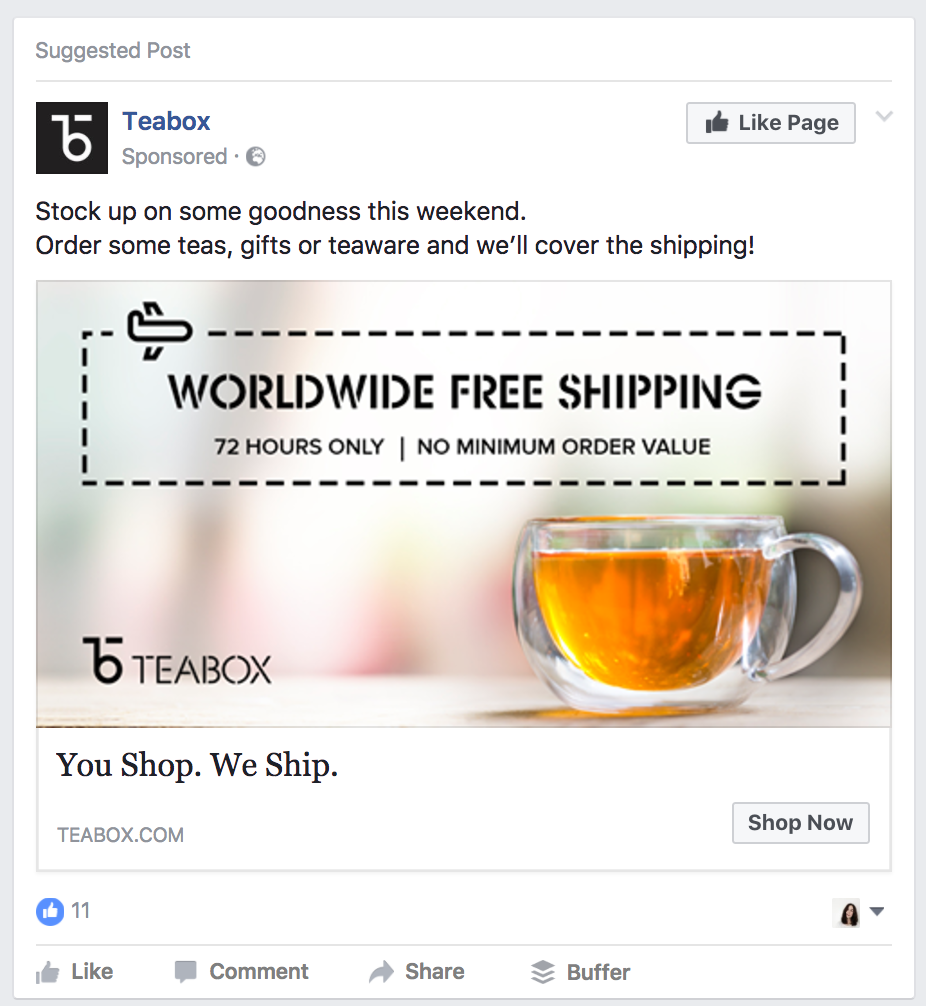
Here are a few other ways you can apply FOMO to your Facebook ad copy:
- Promote a limited-time offer.
- Set a specific time frame to emphasize the urgency.
- Say there's only a specific amount of product left.
- Lastly, don't lie. Your offer should really be limited. Otherwise, your clients may feel deceived and lose trust in your brand.
12. Offer something for free
It's kind of a no-brainer that free stuff gets people to click.
But giving away lots of freebies isn't helping to boost your revenue. Be smart about free giveaways and combine these with the overall marketing strategy.
For example, promote a free ebook, asking only for the person's email address in exchange. AdEspresso does just this with their top-of-funnel campaign.
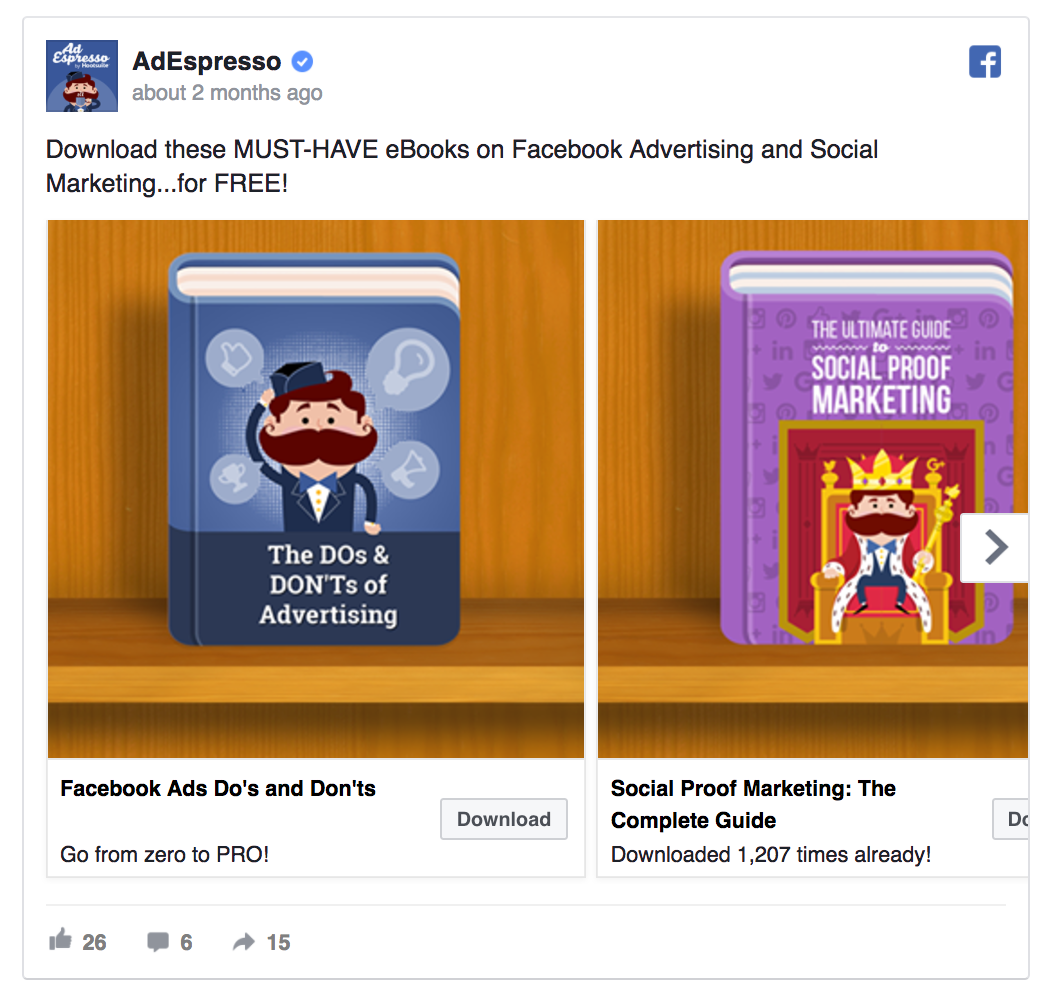
Don't let your relationship with a prospect end right after they download your free content. Move those emails into an email marketing funnel, slowly but surely turning these cold leads into customers within a few months.
If you're not 100% happy with giving away your awesome products and content free forever, follow the example of The New York Times, creating a limited-time free offer.
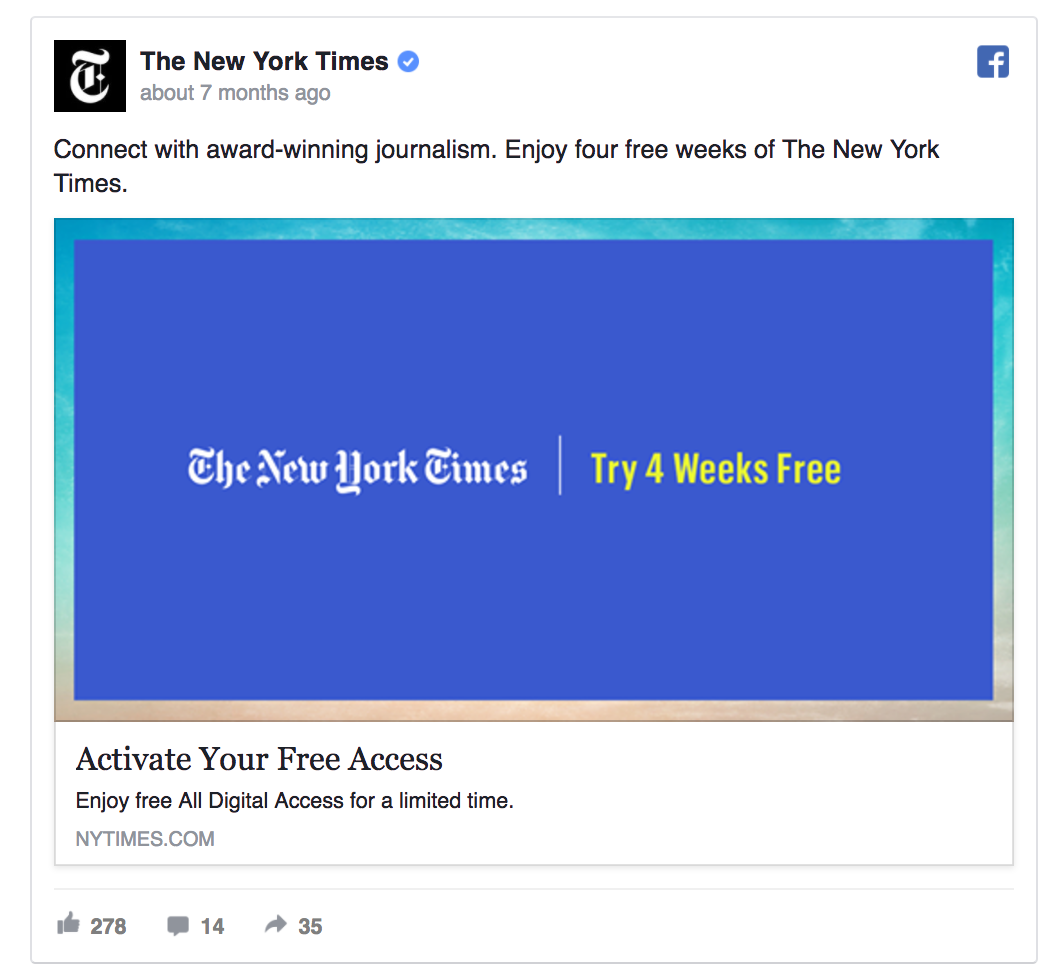
People will get familiar with your product. If they like it, they'll be glad to renew the subscription after the free trial period.
The bottom line? If your goal is to increase your Facebook ads' CTR, make sure your free offer is easy to notice, placing the core message in your ad image or headline.
13. Give away a prize
Prize giveaways can be Facebook advertising goldmines for two reasons:
- Offering people a chance to win a prize could get them excited, meaning they're more willing to take immediate action.
- If you're offering an awesome prize, people will share the promotion with their friends, bringing you hundreds of organic ad views, clicks, and conversions.
Offering a nice prize may be the key to engaging cold Facebook audiences who are unfamiliar with your brand.
For example, SurveyMonkey created a Facebook ad campaign offering an array of fabulous prizes: a drone, GoPro camera, gift cards, and many other goodies.
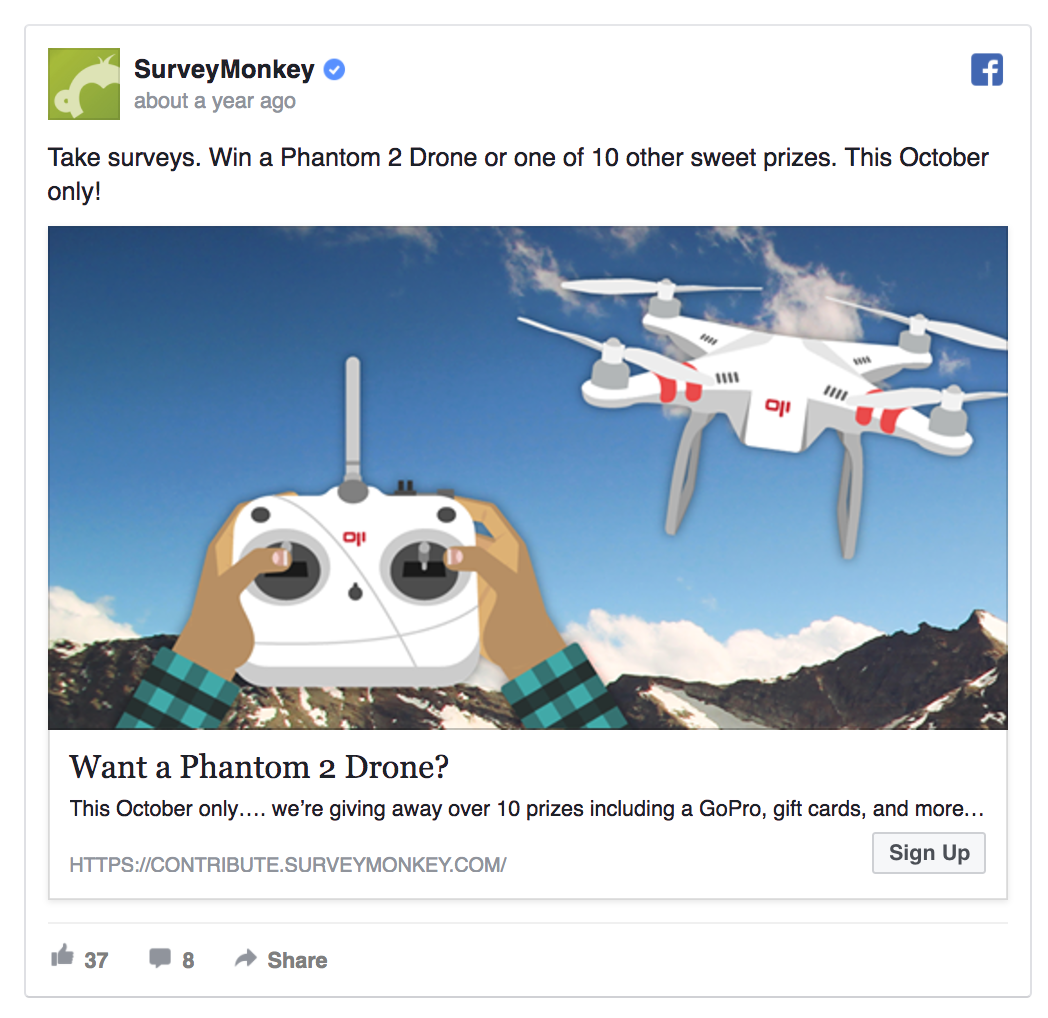
However, don't set the bar for entry too high. As I wrote in this Facebook ad examples post, if you ask people for too big of a commitment, they won't do it.
Work on finding the balance between the mental "threat level" and your prize's value.
14. Address all the possible concerns
This tactic will require knowing your customers like you know your best friend, including their possible concerns regarding your Facebook ad offer.
Sometimes, even though you're promoting an amazing product, people shy away from clicking if it seems like too big of a commitment.
Other times, people avoid signing a deal because they're afraid of unsatisfactory results.
It's your job to dig out these anxieties and concerns and uproot them before your user has time to consider them.
For example, 99designs offers a no-strings-attached money-back guarantee if you're unhappy with the result.
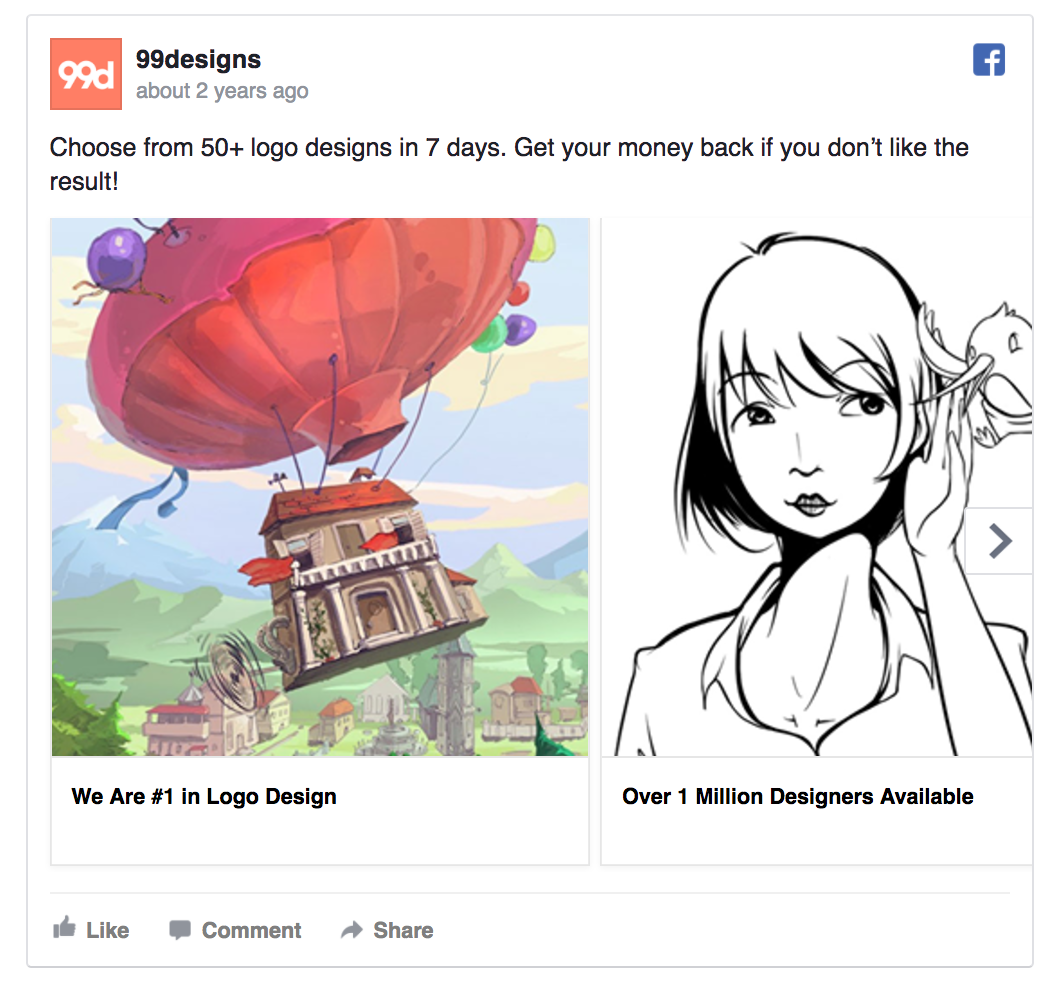
Other anxieties or objections you can answer before they arise include
- the need for entering credit card details
- confusion over whether the delivery's free
- uncertainty about your return policy
15. Create a killer Facebook ad design
Your ad design is one part copy and one part design. Exciting ad copy without an exciting design means your ads will go unnoticed.
So how do you make your ads pop off the screen?
You can start by using colorful images taken with a high-quality camera. Consider using colorful backdrops behind your product to capture eyes. Then ensure the ad copy also pops out, is legible, and truly entices the reader.
If you're making a video ad, then shoot it in HD so it doesn't look poor quality. Consumers associate low-quality advertising with a low-quality product, so don't shoot yourself in the foot.
Consider using models in your images and videos to demonstrate the product. Have them look at the product vs. at the screen to direct your audience's eyes there as well. Models work because they add personality, emotion, and appeal to ads.
Want to see some examples of this? Check out our ultimate rundown of our favorite Facebook ad examples.
16. Make it rain color
Sometimes, all it takes to get people to stare at your ad is a colorful ad image.
Jobbatical used a colored filter (a good solution if you don't have a huge design team to back you up) to make their ad more eye-catching.
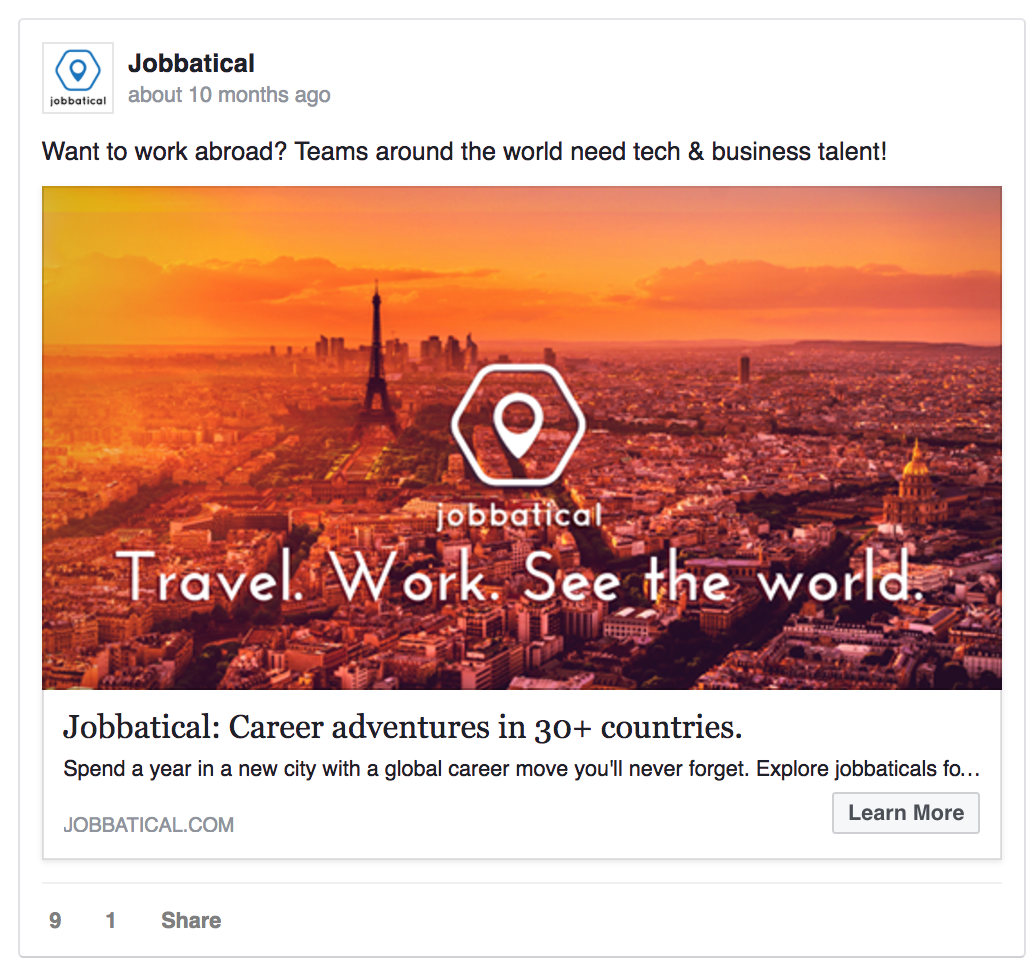
Research has found that people make up their minds within 90 seconds of their initial interactions with either people or products. About 62‐90% of their assessment is based on colors alone.
Your ad image's color combination can decide whether someone clicks on it. Take some time to find the perfect color combination.
17. Steal the show with contrasting colors
Highly contrasted and bright colors have a deeper effect on us, especially in Facebook's crowded feed.
Facebook ads with contrasting color combinations often have a higher CTR. Write unbeatable ad copy to support the ad design, like GetResponse has done here:
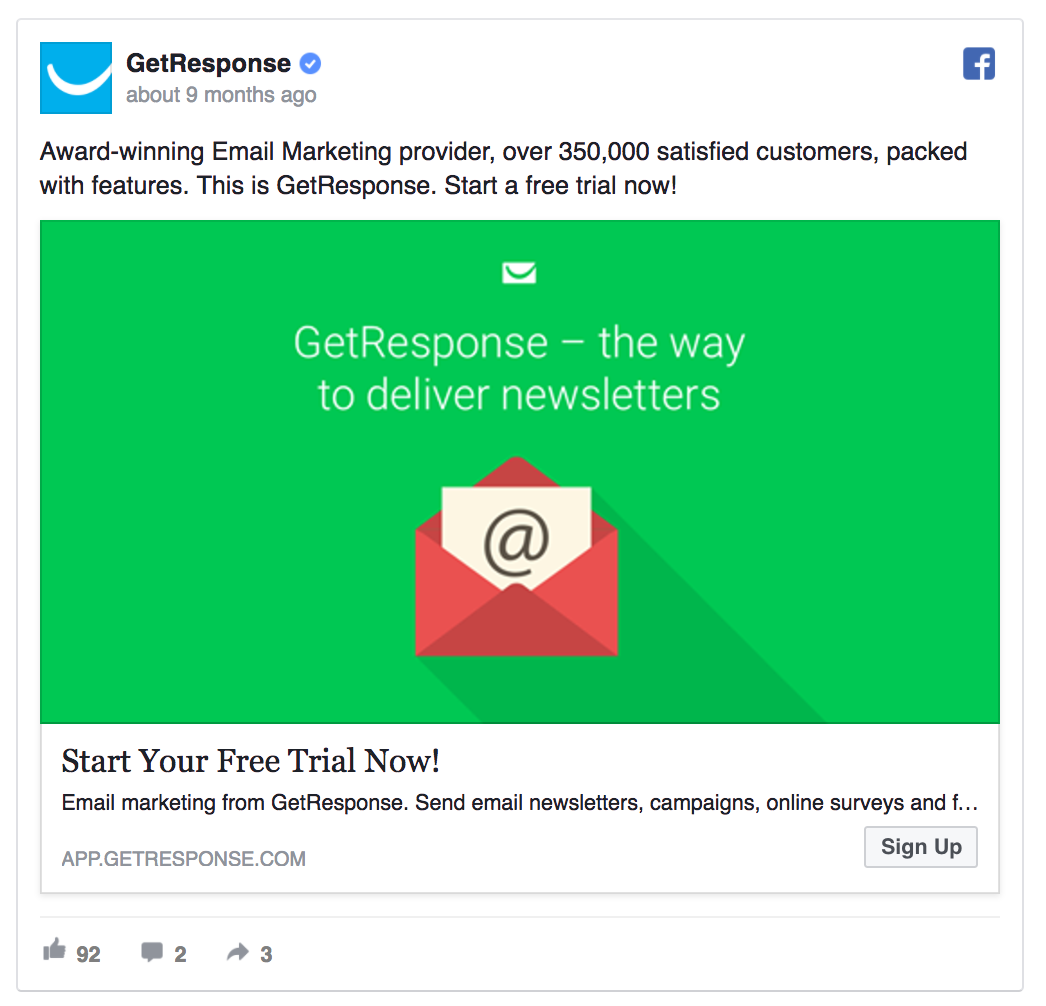
18. Use custom images
If you use free stock photos like thousands of other marketers on Facebook, chances are people won't be interested in seeing the same image in five different ads.
Another problem with generic stock images is that they tell someone else's story, not yours.
Having a Facebook ad image with your product, animation, or real-life happy customers is more genuine (and profitable in the long run).
Take another step further and don't just create custom images, but do your best to create interesting ones.
This Facebook ad by MailChimp definitely got our attention:
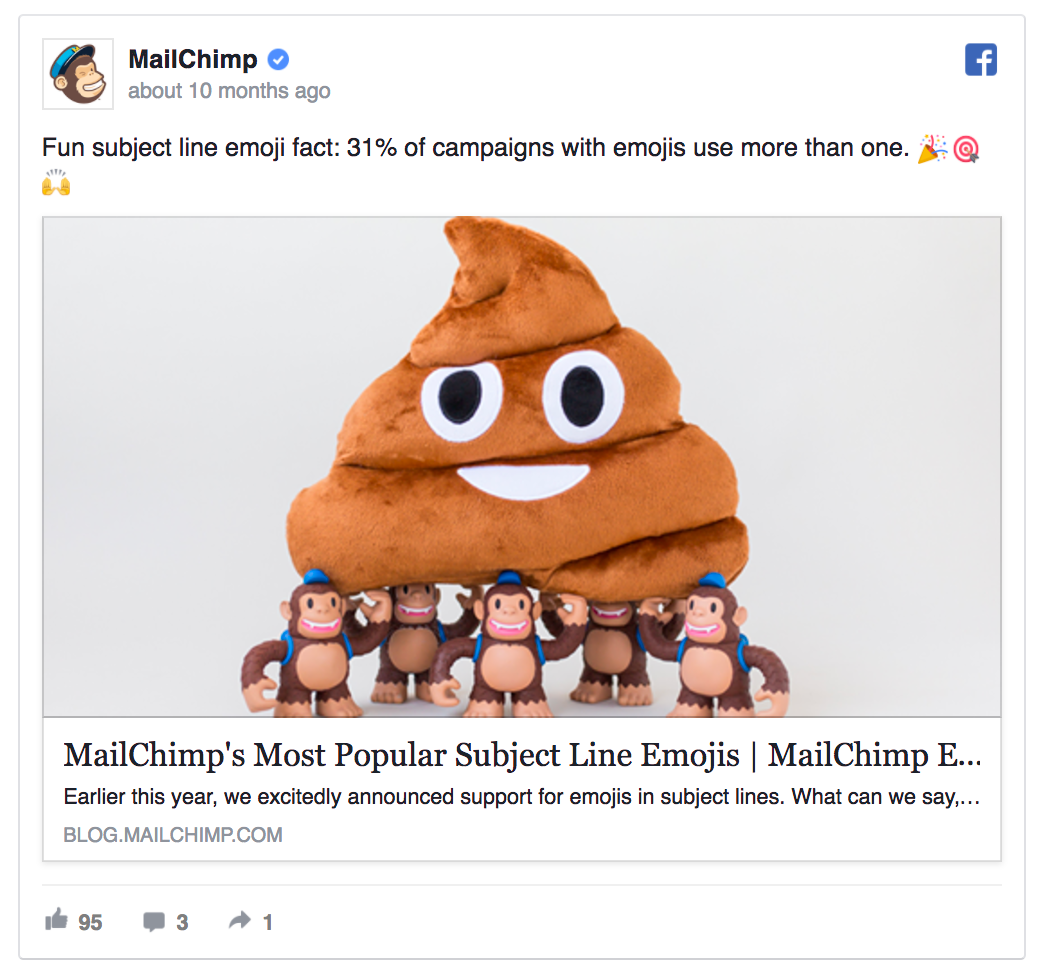
Instead of being afraid of negative feedback, pay the price of a couple of haters in exchange for many new customers.
19. Test in-image ad text
While an irresistible Facebook ad headline is a must-have for having a high click-through rate, there's another excellent placement for your most important message.
As you already know from previous points, people's eyes usually rest first on your ad image. This makes it perfect real estate for placing your most important value proposition.
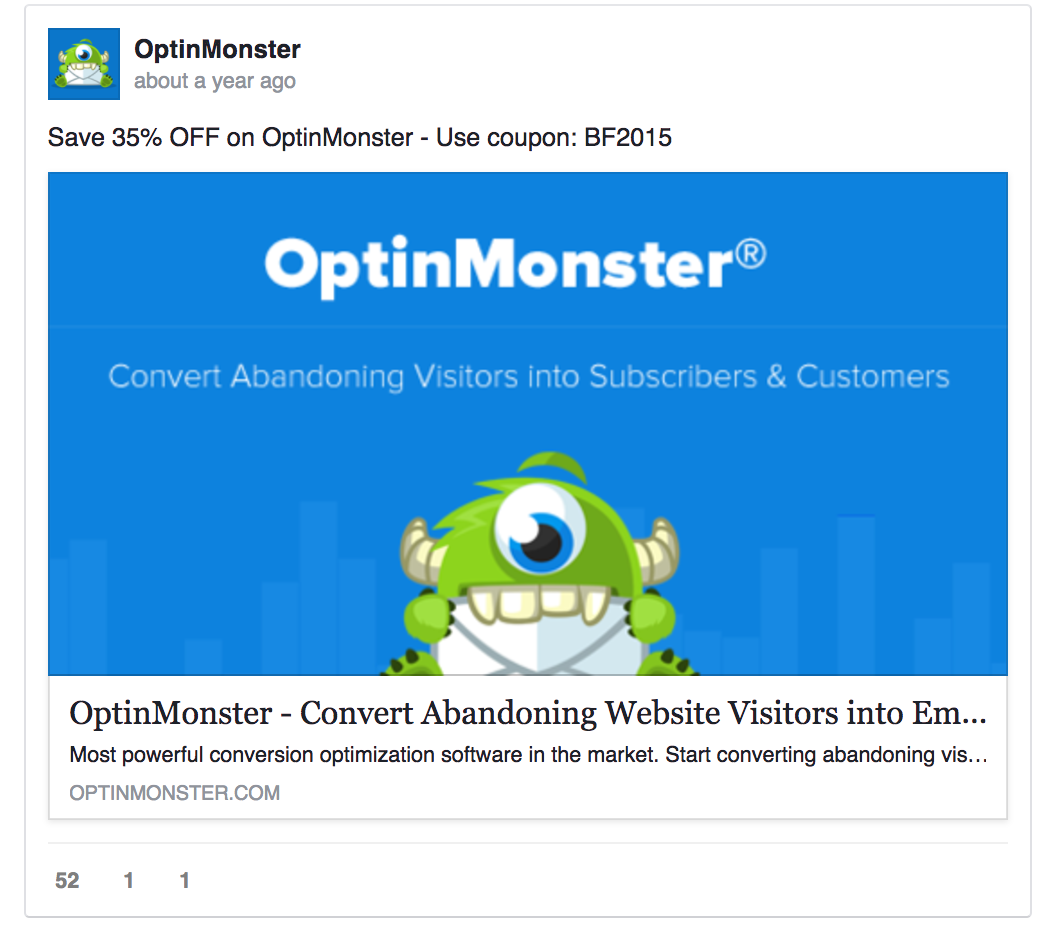
Here's another idea: use a creative in-image text that sparks curiosity, like Hootsuite:
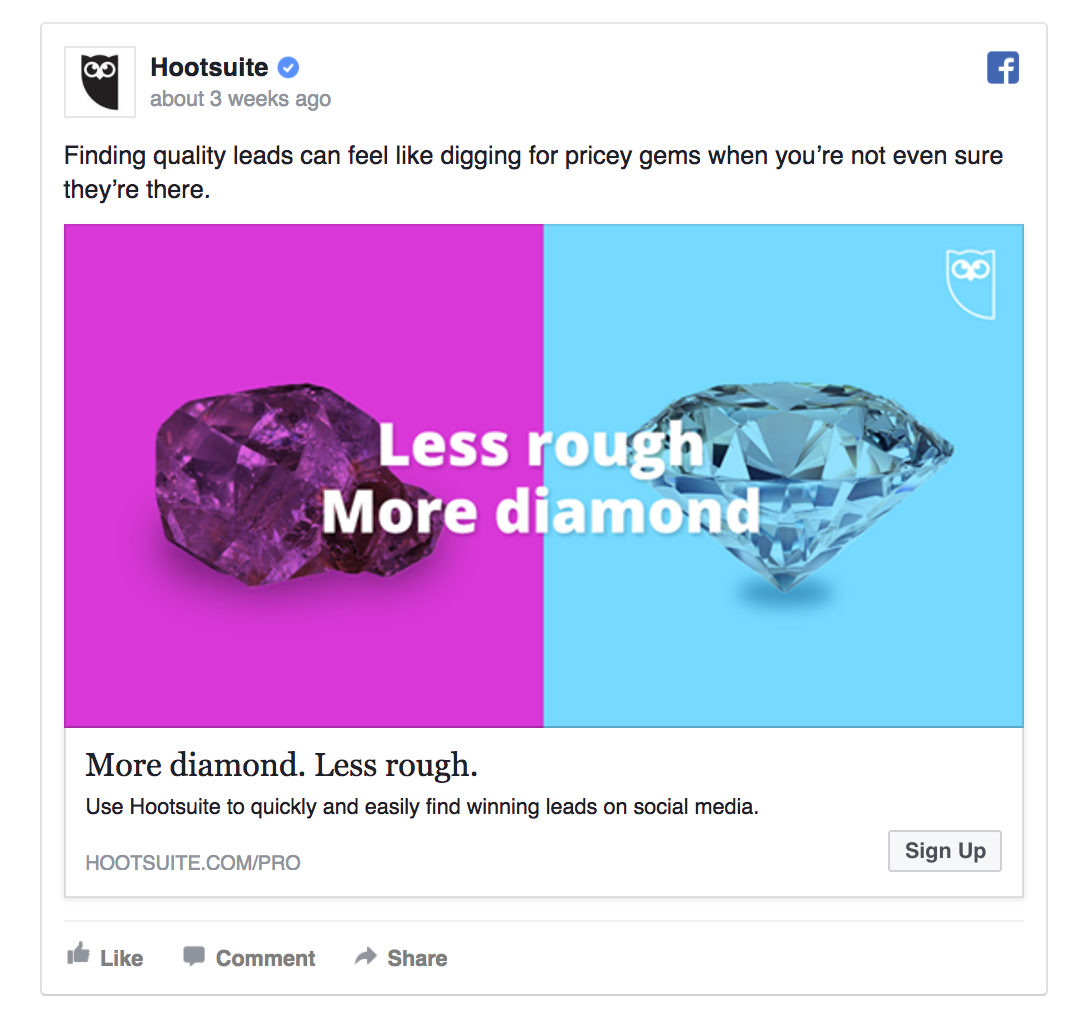
20. Select the right campaign objective
When setting up your Facebook ad campaigns and bidding, you can select between plenty of campaign objectives.
You might not know that the ad campaign objective can have a powerful impact on your ads' CTR and cost-per-conversion.

The campaign objective tells Facebook your ultimate advertising goal. With this information, Facebook's algorithm optimizes your ad delivery to get the most results for your ad budget.
If you select the campaign objective of Brand Awareness or Reach, you're basically telling Facebook you're interested in the maximum number of people seeing your ads, not clicks.
So when aiming for higher CTRs, it's best to select the campaign objectives that require that people click on your ads.
Don't lose sight of your real Facebook advertising goal, be it conversions or app installs. It usually makes sense to choose the campaign objective that matches best with your real advertising goal.
21. Optimize your ad delivery for high CTR
Unfortunately, there's no Facebook ad optimization method that asks Facebook to increase your ads' click-through rate.
But that doesn't mean you can't make some PPC magic happen.
Let me teach you a Facebook ad bidding trick.
To increase your Facebook ads' CTR, optimize your ad delivery for Link Clicks. This way, you're letting Facebook know that you want your ads seen by the people who are most likely to click on them.
The same trick taken a step further: optimize your Facebook ad delivery for Conversions. Now, Facebook's algorithm focuses on getting people to click on your ads and convert.
And boom. You've got a better chance at higher CTR and more conversions.
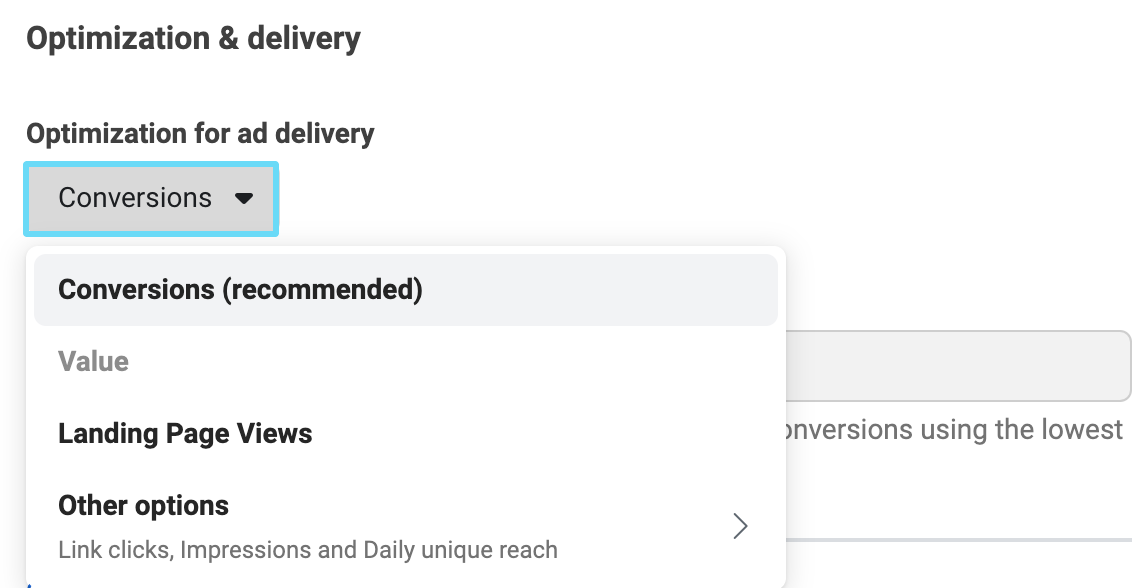
22. Make key objects stand out with colors
It can be overwhelming if you're featuring several products in one ad.
That being said, if you want to put a bigger budget toward one campaign as opposed to a few smaller ones that show one product each, you can use line and color separators to make imagery easier to look at and clearly distinguish each product.
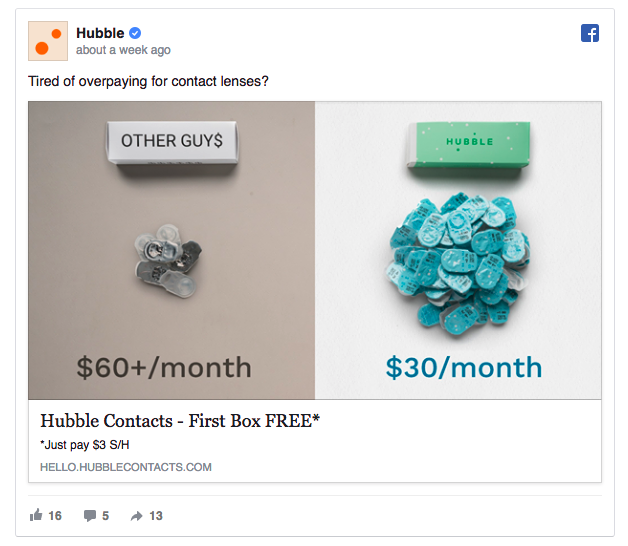
23. Use social proof In your ads
What does including social proof in your ads actually mean?
It means someone else, either customers, companies, credible blogs, etc. have already given your product the thumbs-up.
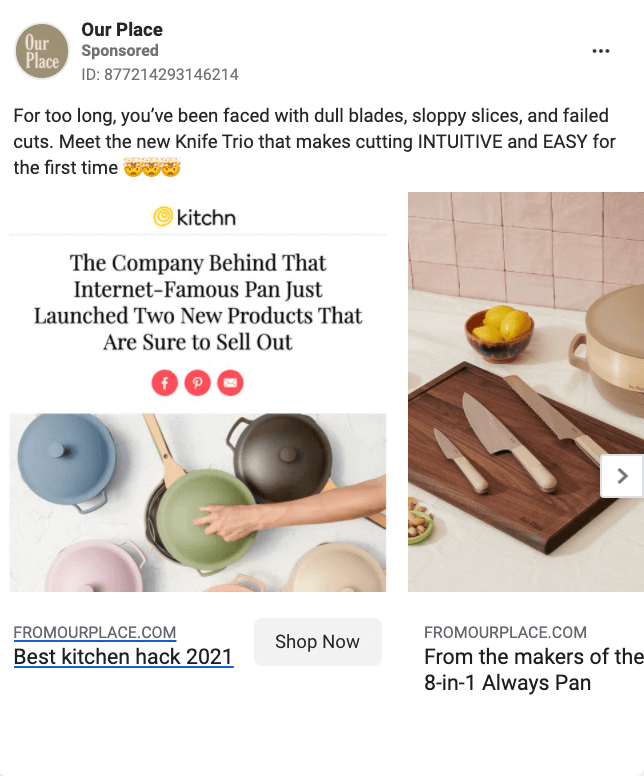
Your social proof doesn’t always have to be positive press from a big-name brand. Even a snapshot of a comment or review proving that your product works can get you more clicks.
In this ZitSticka ad, they include a customer's review that explains the results it brought. It also says how it saved her money.
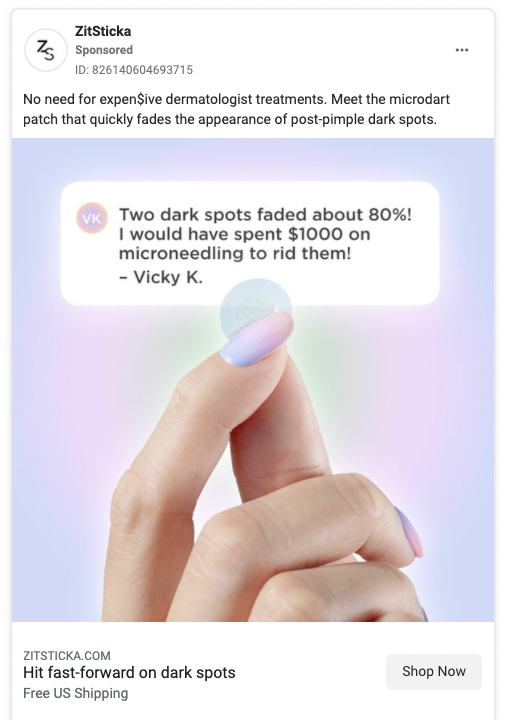
Keep in mind that peer viewer engagement and comments are worth more in weight than a biased statement made by a company promoting the ad. So keep an eye out for reviews you can use.
In fact, create a folder with screenshots to pull from whenever you make an ad.
24. The 'Would You Click?' test
Every time you create a new Facebook ad, undergo a quick litmus test: would you notice and click it if the ad appeared in your newsfeed?
If the ad passes your critical test, it's likely good to go.
Don't trust your judgment? Then send the ad to colleagues, friends, and family to see what they say.
Facebook ad CTR key takeaways
There are dozens of tips in this article. But if you look closely, you'll notice several themes around boosting your Facebook ad CTR:
- inspiring ad copy
- eye-catching ad design
- smart campaign setup
The key to making your ads click-worthy is to make appealing visuals and words that speak to your target audience. If you can pull these off with style and flair, even better.
You may not get it right your first few attempts, and that's okay. Experimentation is the name of the game.
Do it consistently, and you'll find the sweet spots in each campaign.
Take it as a learning experience and learn from your mistakes. Or better yet, learn from the pitfalls of others in our guide all about Facebook ad mistakes.
